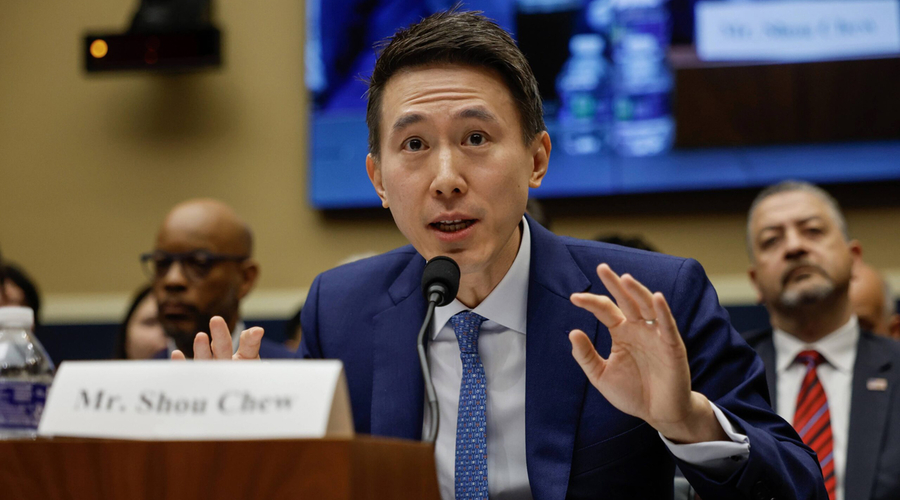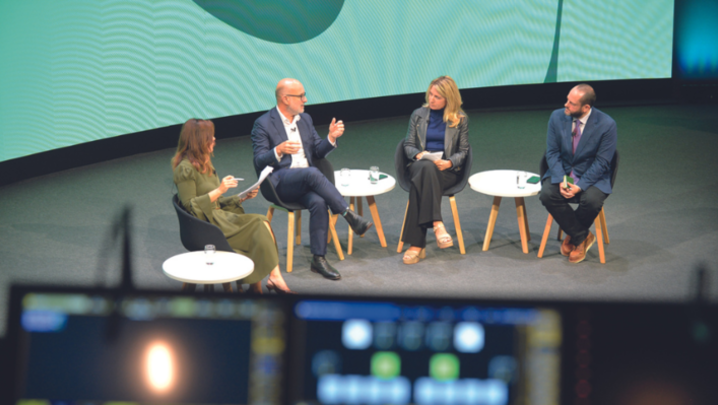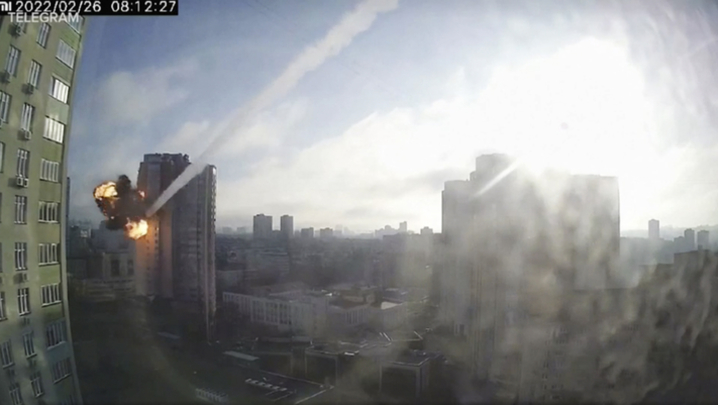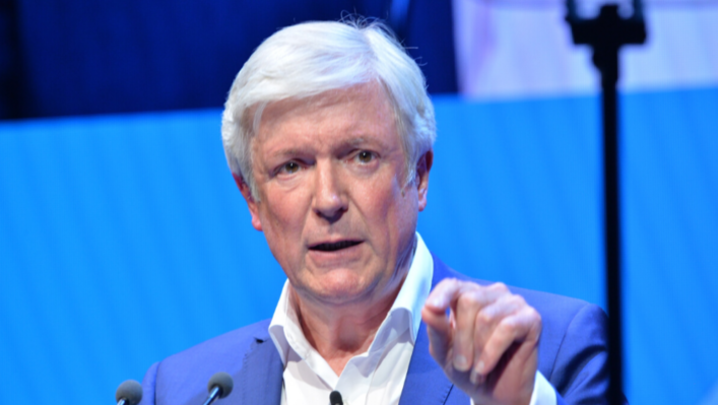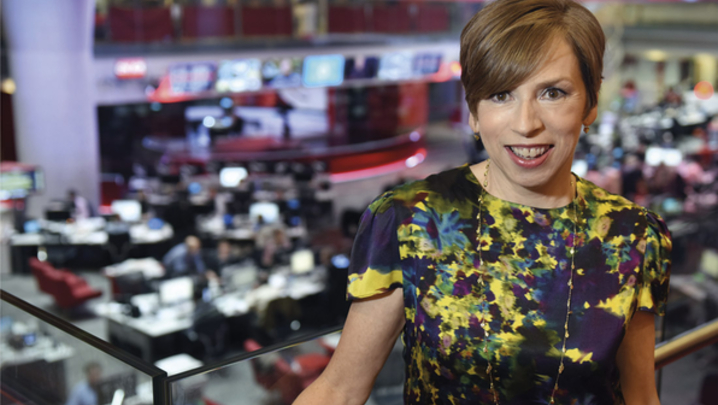Despite government hostility, Generation Z have flocked to the Chinese social media platform and TV news is following them, says Simon Bucks.
TikTok is the new social media kid on the block, but it’s also stirring things up among broadcasters – and not simply because of its controversial Chinese ownership.
Fears that TikTok is mining our data and sending it to Beijing has created a tricky dilemma for media companies. The app has been banned from work devices by a number of governments, international bodies and companies and is under fire from the US Congress.
But what started as a home for teenage dancing, fluffy pets and visual jokes has also become the principal weapon in the battle to reach those traditional news-avoiders, Generation Z.
So far, most UK newsrooms have decided that any security risk is outweighed by the reward of engaging the country’s 10 million 16- to 24-year-olds, who are watching everything from short clips to full-length reports and live output on the platform.
The BBC, while all but banning staff from using it on work phones, except for business purposes, seems to have concluded that 1 billion active monthly users can’t be wrong. BBC News, initially lukewarm, is now enthusiastic about its 1.3 million followers. Director-General Tim Davie told an RTS event in December that TikTok is now bigger in video for UK Gen Z than the corporation.
“The existential problem for media companies is that under-25s behave differently,” says Nic Newman, senior research associate at the Reuters Institute for the Study of Journalism and author of a major report on TikTok in news. “They don’t go to websites as much as millennials. If you want to reach them, TikTok and YouTube are your top two platforms.”
News executives agree that, with little outlay, TikTok allows them to engage colossal numbers of young people who don’t watch linear-TV. Plus, they argue, they can counterbalance the misinformation and fake news that floods all social platforms.
Channel 4 News has seen its following grow from 25,000 to almost 500,000 in 15 months. “From a public service perspective, its appeal is its huge reach,” says digital editor Mike Deri Smith. ITV News tells a similar story: its following has risen from 137,000 to 1.8 million in the same period. “The growth has been exponential,” confirms executive digital editor Matt Williams.
Sky News is the market leader among UK TV newsrooms (3.9 million followers), thanks to starting early and its huge supply of video. Alan Strange, output editor of digital, says TikTok is now the “hero” social platform, alongside YouTube, and, in some respects, outperforms the TV channel.
“It’s our biggest opportunity for growth,” agrees Geoff Marsh, chief digital officer at GB News (376,500 followers). “It’s spectacular. It’s gone from being an emerging platform that you’re keeping an eye on to something that needs to be a fundamental part of your planning.”
The catalyst for this media revolution seems to have been Ukraine. Liv Moloney, head of social media at The Economist (227,000 followers), argues: “It was a formative moment; a really human story but also the first smartphone war, with everyone on both sides filming everything they do.”
ITV’s Williams adds: “A lot of young people were seeing something like it for the first time. There was a huge thirst for explanation and information from trusted news sources.”
TikTok, like YouTube, serves only video – unlike Twitter, Instagram and Facebook, where videos cohabit with pictures, text and graphics.
It’s also utterly compulsive. The user swipes through an endless “for you” stream of vertical videos, selected by TikTok’s aggressively personalised algorithm. Other social media platforms gauge your interests from your “follows” and friends. TikTok calculates it from the videos you watch, like or share and your other behaviour on the app.
''You look at a video and the algorithm decides what you will see next'
“It’s instantaneous,” notes Lucien Bowater, a digital and innovation educational technologist. “You literally look at a video and the algorithm decides what you will see next. It’s not the news that an editor thinks you deserve but the news you want.”
“It’s so addictive” adds Moloney. “You keep scrolling and you always get something that’s interesting.”
The key to TikTok success for newsrooms – more decisively than elsewhere - is to be first with the story. “If you are second or third, the algorithm will demote you,” advises Newman. “It’s brutal,” confirms Moloney at The Economist. “On Instagram, if you have 6 million followers, you are guaranteed a certain number of views. On TikTok, every video you post only does well on its own merit.”
A key debate concerns content creation versus curation. Some argue that, to resonate with Gen-Z, you need original TikTok-style videos: short, punchy, zany. BBC News is recruiting TikTok specialists with this advert: “Growing the BBC News TikTok account to make it the biggest and best, both globally and in the UK, is one of News’s main priorities for 2023.”
Other broadcasters have teams making vertical videos but say that repurposing their existing TV content also works. Channel 4’s Deri Smith believes that both are important: “Content made for the platform has the best chance of success but, equally, very strong newsgathering does well, too.”
Williams agrees: “We’d put up a Tom Bradby lead-in from News at 10, the purest form of storytelling in some ways, and it would do really well.”
A turning point was TikTok’s decision to raise the maximum video length from 60 seconds to 10 minutes, allowing full-length TV reports. At Sky News, Strange is training star reporters such as Stuart Ramsay and economics specialist Ed Conway to tell their stories on TikTok. “There’s no one better to make stories relevant to the audience than the person on the frontline.” Sky even screens its rolling channel on TikTok, with pleasing results. Its live coverage of the late Queen’s funeral was watched by 16 million globally.
For commercial publishers, TikTok’s drawback is that it’s a walled garden: it doesn’t work like Twitter and Facebook, driving users to its own platforms, which it can monetise. Nor is there revenue from TikTok itself, though that is coming, apparently.
Digital news editors also complain about TikTok’s draconian “community guidelines”, which ban some news staples – for example, protest marches if they look potentially violent. According to Deri Smith, “Words such as death and sex can end the reach of a story.” There is an appeal process but it is slow to deliver a response.
Strange says Sky’s ultimate ambition is to drive the social audience to platforms it can monetise, whether that is TV, apps or the web. For others, the dramatic audience expansion is sufficient reward. “Our core digital strategy is reaching the audiences. We need to be there. It’s a shop window for ITV News,” says Williams.
For GB News, TikTok has widened its demographic, Geoff Marsh argues, “You can’t look at GB News on TikTok and say it’s only consumed by people over 50 who are right wing.”
The success of TikTok as the new, must-have platform for newsrooms, may be scuppered by the Chinese issue. Richard Sambrook, the former director of BBC News, argues: “For years, the tech platforms have been able to dictate the terms and media companies had to follow to build reach – particularly with younger audiences.
“But if there really are security risks, then it could be a turning point. Media organisations would be forced to push back harder and get guarantees around their relationship with TikTok and others.”
Would Western governments ever entirely ban TikTok? Nic Newman thinks not. “It would be very hard politically for them to remove something that is being used by 50% of under-25s.” And broadcasters won’t willingly give up a platform that delivers so many hard-to-reach eyeballs.

